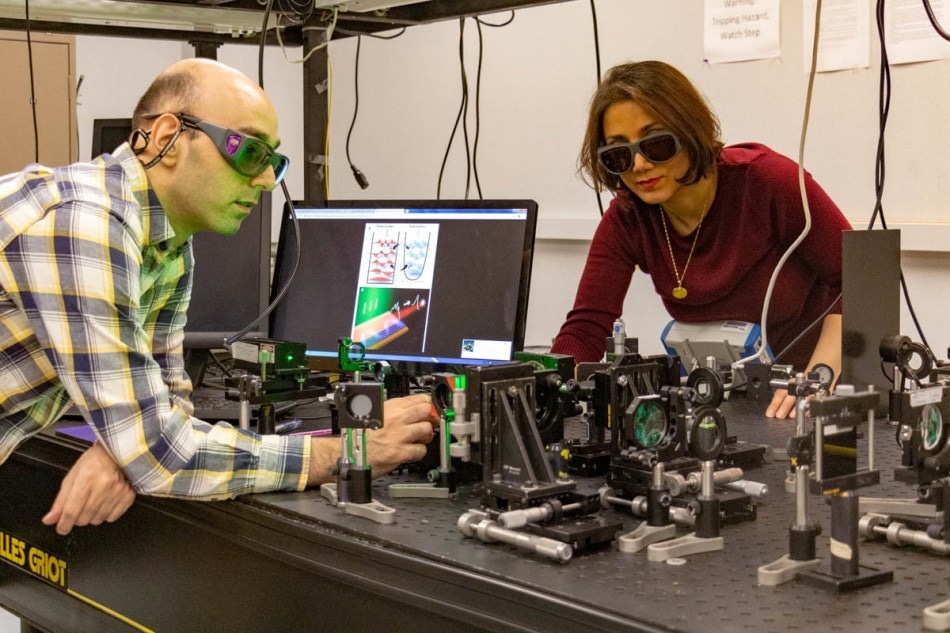Mar 1 2019
Researchers from the University of Central Florida (UCF) have overcome an age-old problem in laser science, and the results could have applications in drilling, surgery, and 3D laser mapping.
 Associate Professor Mercedeh Khajavikhan and her team have developed the first supersymmetric laser array. (Image credit: University of Central Florida)
Associate Professor Mercedeh Khajavikhan and her team have developed the first supersymmetric laser array. (Image credit: University of Central Florida)
Using the supersymmetry principle, they have designed the first supersymmetric laser array. Details of their findings can be found in the journal Science.
Supersymmetry is an estimation in physics that states every particle of matter, such as an electron, has one or more superpartners that is the same apart from a precise variance in their momentum.
“This is the first demonstration of a supersymmetric laser array that is promising to meet the needs for high power integrated laser array with a high-quality beam emission,” says study co-author Mercedeh Khajavikhan, an associate professor of optics and photonics in UCF’s College of Optics and Photonics.
Khajavikhan led the team that designed the laser array, which is made up rows of lasers and can yield large output power and greater beam quality. This is a first array that reliably produces high radiance, as earlier designs have delivered degraded beam quality.
Khajavikhan says that previous work by Demetrios Christodoulides, a Pegasus professor of optics and photonics, Cobb Family Endowed Chair in the college and study co-author, recommended the use of supersymmetry in optics and her team has investigated it further in its studies.
“However, it is only recently that my group managed to bring these ideas in actual laser settings, where such notions can be fruitfully used to address real problems in photonics,” she says.
The key to her team’s laser arrays is spacing lasers next to each other using calculations that take into consideration supersymmetry. She says this development is very crucial in a number of areas that a high-power integrated laser is required.
We foresee many applications of supersymmetric laser arrays in medicine, military, industry, and communications, wherever there is a need for high power integrated laser arrays having a high beam quality.
Mercedeh Khajavikhan, Associate Professor of Optics and Photonics, College of Optics and Photonics, UCF.
One stimulating application could be in the use of LIDAR, which employs lasers to survey and map 3D terrain and is used in areas such as self-driving cars, atmospheric physics, archaeology, forestry, and more.
LIDAR requires a high-power and high-beam quality laser. Currently, because of the lack of this type of lasers in integrated form, they use other kinds of lasers. The supersymmetric laser provides an integrated high-power laser solution that also shows high beam quality.
Mercedeh Khajavikhan, Associate Professor of Optics and Photonics, College of Optics and Photonics, UCF.
The study’s co-authors include Mohammad P. Hokmabadi, the study’s lead author and a postdoctoral associate in the College of Optics and Photonics; Nicholas S. Nye, a graduate research assistant in the college; and Ramy El-Ganainy, an associate professor at Michigan Technological University and UCF alumni.
Khajavikhan holds more than a few degrees including a doctorate in electrical engineering from the University of Minnesota. She went to UCF in 2012.